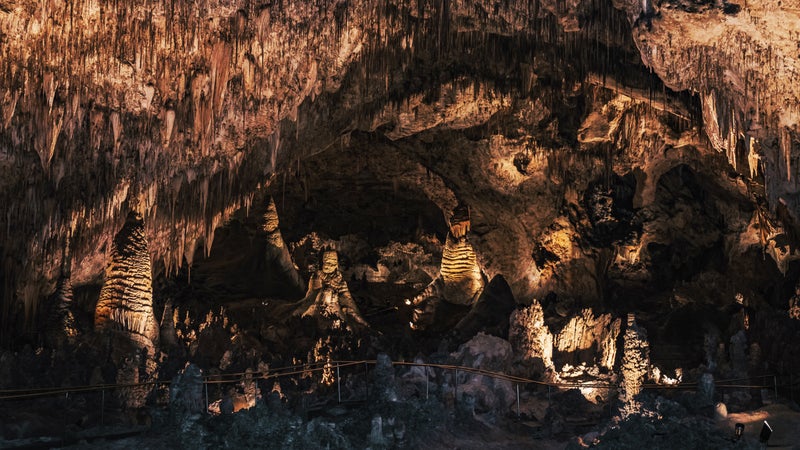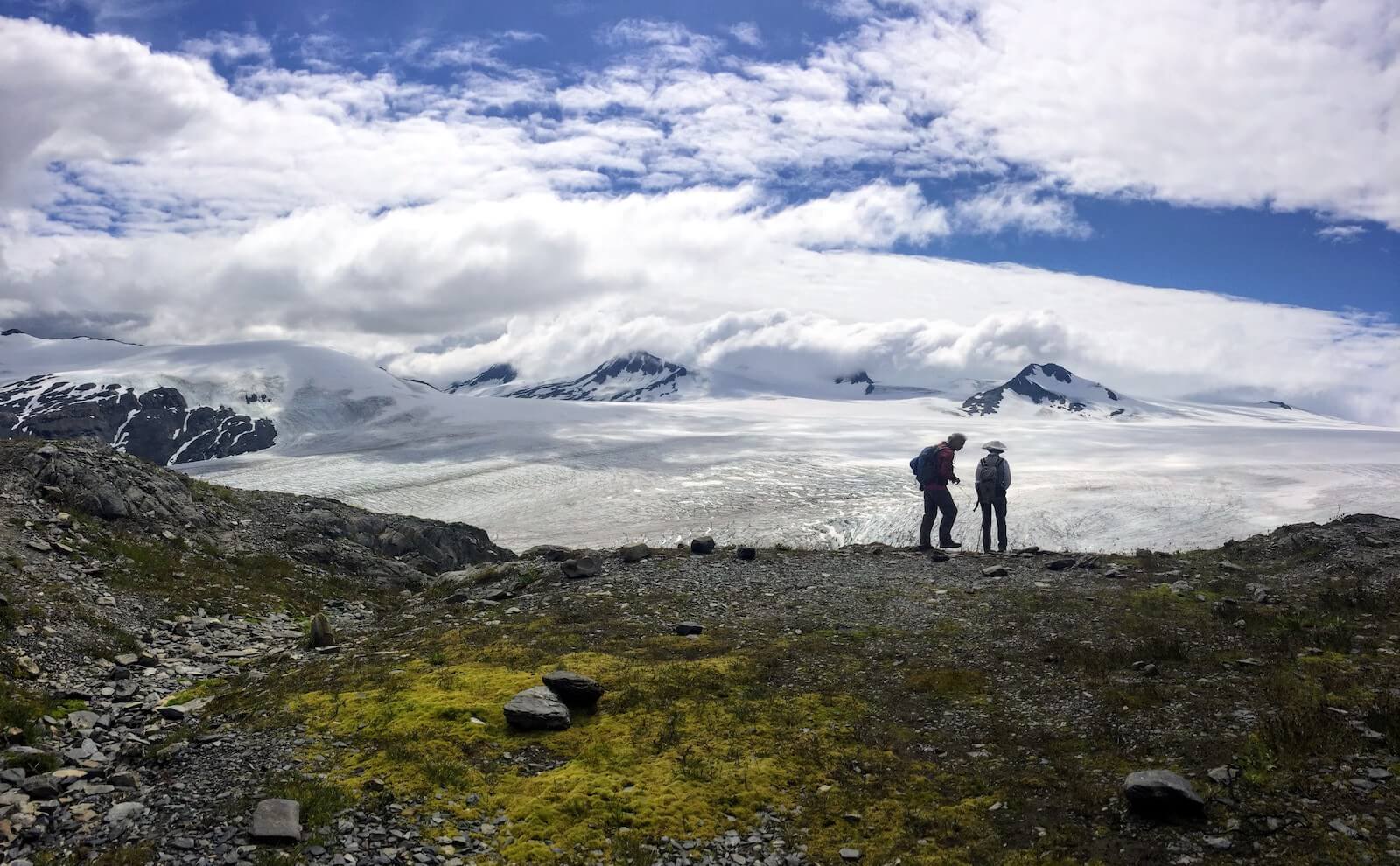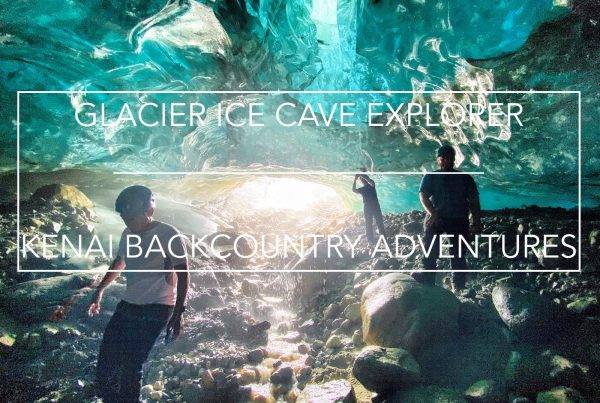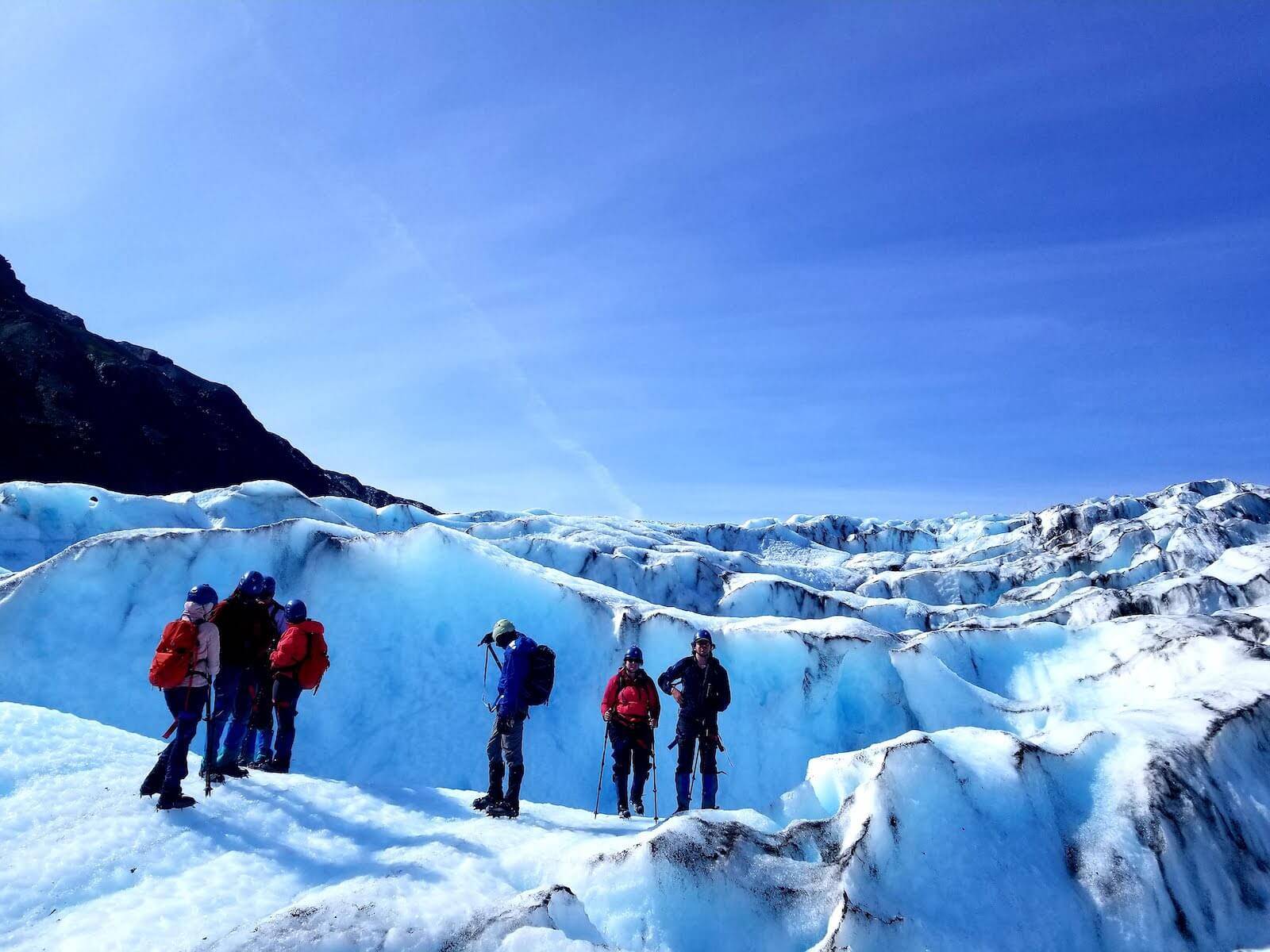The Best Hike in Every National Park
We asked the experts—and this is the one trail you can’t miss in each of the 61 U.S. national parks
From Alaska’s remote bush to downtown Cleveland, our national parks provide us with millions of acres of public land to explore. We compiled a list of the best hikes in each park, according to the wilderness guides, park rangers, and hikers who know them.
Acadia

Maine
The Expert: Pat Johnson, Maine Outdoor Adventure Club trip leader
The Hike: Penobscot and Sargent Mountain Loop
Summit two of the park’s highest peaks on this 9.5-mile loop through thick spruce forest that eventually gives way to pink-tinted granite crags. The route offers access to three carriage-road bridges, relics from John D. Rockefeller Jr.’s philanthropic work—consider detouring less than a half mile to the 230-foot-long Cliffside Bridge.
Arches

Utah
The Expert: John Tillison, former Washington State park ranger
The Hike: Devils Garden Loop
You’ll see eight of the park’s stunning rock formations on this 7.9-mile tour through Devils Garden. It’s an easy stroll to the longest arch in North America, Landscape Arch, but then the gentle trail transitions to narrow ledges that involve some scrambling to reach Double O, Navajo, and Partition Arches.
Badlands

South Dakota
The Expert: Kelsy Koerlin, Rapid City, South Dakota, hiker
The Hike: Notch Trail
An easy 1.5-mile round-trip, this trail tours the best of the Badlands’ otherworldly assortment of eroded rock and clay, splashed with a brilliant array of red, white, and black. Ascend a log ladder to a bird’s-eye view of the rugged terrain and distant prairie of White River Valley.
Big Bend

Texas
The Expert: Courtney Lyons-Garcia, Big Bend Conservancy executive director
The Hike: Lost Mine Trail
Soak in the solitude through the heart of the Chisos Mountains for 4.8 miles round-trip, past alligator junipers and piñon pines. The views of the Sierra del Carmen mountains in Mexico are spectacular. Visit in November or March to avoid the summer heat.
Biscayne

Florida
The Expert: Sandra Friend, author of ‘The Florida Trail Guide’
The Hike: Spite Highway Trail
Only accessible by boat, Elliot Key is the largest island in the park, home to the “Spite Highway,” a seven-mile sliver of forest that in the 1960s was flattened in opposition to a national-monument designation. It’s the park’s only hiking trail, and on it you’ll be immersed in tropical forests, even as Miami looms to the north.
Black Canyon of the Gunnison

Colorado
The Expert: Elaine Brett, North Fork Valley, Colorado, hiker
The Hike: North Vista Trail
At Exclamation Point, snag the best view of the park’s namesake canyon from 900 feet above the rim. Continue to Green Mountain for a panoramic vista of the San Juan Mountains and Grand Mesa, a seven-mile round-trip.
Bryce Canyon

Utah
The Expert: Charlie Neumann, owner of Willow Canyon Outdoor, in Kanab, Utah
The Hike: Under the Rim Trail
At 23 miles one-way, Under the Rim Trail is the longest in Bryce. Take two days to experience the best of the Paunsaugant Plateau’s hoodoo rock spires. Tackle most of the 5,000 feet in elevation change early by starting at Rainbow Point—you can arrange a shuttle there with the Park Service, free with your entry fee.
Canyonlands

Utah
The Expert: Cort Wright, Moab Adventure Center guide
The Hike: Grand View Point
Although only a two-mile round-trip, the trail leading to Grand View Point isn’t short on views—you’ll gawk at the maze of basins, dozens of canyons, and the La Sal Mountains in the distance. Arrive before dawn (and the crowds) to watch the sun cast the desert in an amber hue.
Capitol Reef

Utah
The Expert: Andrew Wojtanik, former Capitol Reef interpretive ranger
The Hike: Halls Creek Narrows
The beauty of the Halls Creek Narrows, a slot canyon with towering cliffs, is often compared to the famous Narrows of Zion, yet this 22.4-mile round-trip hike is much more remote and rugged. The unmarked route requires a topographic map and compass to navigate. Plan to spend two nights in the backcountry and to get wet through several creek crossings.
Carlsbad Caverns

New Mexico
The Expert: Colin Walfield, Carlsbad Caverns National Park, employee
The Hike: Big Room Trail
It takes about an hour and a half to encircle the Big Room—the largest chamber within Carlsbad Caverns and the largest single cave chamber by volume in North America. This 1.25-mile walk twists among giant stalagmites on a paved trail with handrails. A ranger-guided tour provides insight into the geologic history of the cave system.
Channel Islands

California
The Expert: David Begun, Channel Islands park ranger
The Hike: Lobo Canyon Trail
This 5.2-mile loop is marked by its ecological diversity—more than a dozen rare plants grow in the park. You’ll start in grassland bluffs, with sweeping views of the Pacific, before dropping into a canyon harboring native plants like the canyon sunflower. When you reach the coastline, look out for peregrine falcons and bald eagles.
Congaree

South Carolina
The Expert: Barbie Smrekar, Columbia Outdoor Adventure Network organizer
The Hike: River Trail
Tour this park’s namesake river on a 10.4-mile trail through bottomland and bald cypress forest, home to whitetail deer, otters, and feral hogs. In periods of low water, lounge near the river on exposed sandbars—but keep an eye out for alligators.
Crater Lake

Oregon
The Expert: Erik Fernandez, Oregon Wild wilderness-program manager
The Hike: Garfield Peak Trail
Starting from the Crater Lake Lodge, at an elevation of about 7,000 feet, climb another thousand feet in 1.7 miles to Garfield Peak. From here you’ll have a view of the lake’s crystal-blue water, the deepest in the country at almost 2,000 feet. Go in July for peak wildflower viewing and early in the morning to miss the crowds.
Cuyahoga Valley

Ohio
The Expert: Erik Baldwin, Cleveland Hiking Club member
The Hike: Buckeye Trail
You’ll be hard-pressed to find another park quite like Cuyahoga Valley, nestled in the middle of Cleveland. This one’s for the trail runners and the hardcore hikers: a 12.6-mile section of the statewide 1,400-mile Buckeye Trail from Station Road Bridge to the historic village of Boston. Pass waterfalls and old homesteads dotting densely forested hills before looping back.
Death Valley

California and Nevada
The Expert: Alan Gegax, VegasHikers trip organizer
The Hike: Panamint City Ghost Town
Panamint City was a mining town founded by outlaws in 1873 that quickly garnered a rough reputation, but it was leveled a few years later in a flash flood. Hike to its ruins from Chris Wicht’s Camp, five miles via Surprise Canyon, and admire its flowing water and lush vegetation—rarities in Death Valley.
Denali

Alaska
The Expert: Amy Eckert, travel writer
The Hike: Savage Alpine Trail
Few trails exist in Denali National Park, but among the handful that do, Savage Alpine offers a lot in only eight miles round-trip. Wind over tundra and past Dall sheep before climbing a ridge that on a clear day offers a view of 20,310-foot Denali, North America’s highest peak.
Dry Tortugas

Florida
The Expert: Sandra Friend, author of ‘The Florida Trail Guide’
The Hike: Fort Jefferson Loop
You won’t find any wilderness hiking trails in Dry Tortugas, an island 70 miles west of Key West. The main attraction here is Fort Jefferson, the largest masonry structure in the Western Hemisphere. A half-mile loop around the island is a great tour of the fort and overlooks the Caribbean’s crystal waters.
Everglades

Florida
The Expert: Sandra Friend, author of ‘The Florida Trail Guide’
The Hike: Snake Bight Trail
The Everglades are better known for swampy boat tours than hiking. But the best trail here is Snake Bight, 1.6 miles one-way through tropical forests. The terminus is a boardwalk that offers bird-watching near a bay—look for pink flamingos.
Gates of the Arctic

Alaska
The Expert: Carl Donohue, Expeditions Alaska guide
The Hike: Koyukuk River Route
Take a plane to a gravel bar on the North Fork of the Koyukuk River, which snakes for more than 100 miles between glacial valleys. Spend a week and follow three creeks—Kachwona, Wolf, and Fish—up to 40 miles deep into the backcountry of the Brooks Range.
Gateway Arch

Missouri
At just 91 acres, Gateway Arch is the smallest National Park. There’s not really any hiking, per se, but you should stroll the Mississippi River waterfront and then take the elevator to the top of the Arch.
Glacier

Montana
The Expert: Grete Gansauer, Montana Wilderness Association northwest Montana field director
The Hike: Hidden Lake Trail
Hikers habitually gawk at bears and bighorn sheep along this alpine 5.4-mile out-and-back. In summer you’ll be surrounded by wildflowers as you gaze at Glacier’s jagged peaks. Descend to Hidden Lake via switchbacks to lounge on the beach, with Bearhat and Reynolds Mountains just over your shoulder.
Glacier Bay

Alaska
The Expert: Adam DiPietro, former Glacier Bay trail-crew member
The Hike: Gustavus Plane-Crash Site
This park is celebrated for whale-watching and towering glaciers, and those are definitely must-do’s, but so is this half-mile hike to a Douglas C-47 crash site—in 1957, the crew went down after clipping a tall tree. The trail takes you through woods smattered with mosses, like old man’s beard, and you’ll likely have it to yourself.
Grand Canyon

Arizona
The Expert: Melanie Radzicki McManus, Arizona Trail thru-hiker
The Hike: South Kaibab and Bright Angel Trails
The best hike in the Grand Canyon combines two trails, which traverse the mile-deep canyon, and takes two days. From the South Kaibab Trailhead, descend seven miles via ridges and spend the night next to the Colorado River at the Bright Angel Campground. The next day, huff back up the canyon on the Bright Angel Trail for 9.5 miles.
Grand Teton

Wyoming
The Expert: Amy Eckert, travel writer
The Hike: Lake Solitude
From Jenny Lake, follow the crowds to Inspiration Point, which offers views of the Gros Ventre Mountains. As you enter Cascade Canyon, the masses dwindle as the Tetons’ jagged peaks flank the trail. Pass berry patches and boulder fields before reaching Lake Solitude at mile ten for a secluded night in the backcountry, then trek back the next day.
Great Basin

Nevada
The Expert: Nichole Andler, Great Basin National Park chief of interpretation
The Hike: Timber Creek–Baker Creek Loop Trail
You’ll have this 5.1-mile trail to yourself virtually any time of year, starting from 8,000 feet and walking uphill via Timber Creek, with expansive views of Snake Valley below. Climb another 1,600 feet or so to aspen groves and a meadow, with 11,926-foot Pyramid Peak just overhead.
Great Sand Dunes

Colorado
The Expert: Ryan Kempfer, Salida Mountain Sports employee
The Hike: Sand Ramp Trail
Much more than sand dunes, this hike includes creek crossings, wildlife viewing, and stunning shots of the Sangre de Cristo Mountains. Skirt the eastern edge of the dunes across undulating terrain for 11 miles one-way. Camp near Sand Creek’s cottonwoods before backtracking the next day.
Great Smoky Mountains

North Carolina and Tennessee
The Expert: Diane Petrilla, Smoky Mountains Hiking Club vice president
The Hike: Ramsey Cascades Trail
This patch of woods in the Smokies was never logged, so it’s full of giant trees—some tulip poplars reach seven feet in diameter. Through a jungle of rhododendrons, you’ll ascend more than 2,000 feet over four miles to the tallest waterfall in the park, 100-foot Ramsey Cascades.
Guadalupe Mountains

Texas
The Expert: Cameron Hall, North Texas hiker
The Hike: McKittrick Canyon Trail
McKittrick Canyon is often hailed as the most beautiful spot in Texas. It’s secluded, and in the fall, foliage bursts red and yellow. This 14.8-mile out-and-back takes you to Pratt Cabin and then to a small cave with stalagmites. You’ll ascend McKittrick Ridge on the steepest section of trail in the park, looking down on the canyon.
Haleakala

Hawaii
The Expert: Joani Morris, Friends of Haleakala National Park hike leader
The Hike: Sliding Sands Trail
Towering over Maui at 10,023 feet above sea level, the dormant Haleakala volcano resembles the surface of Mars. For a tour of the caldron, start at the Keoneheehee Trailhead, trekking across the crater’s floor. People flock to the summit to witness a spectacular sunrise (reservations are needed).
Hawaii Volcanoes

Hawaii
The Expert: Barnard Griggs, member of the Hawaiian Trail and Mountain Corp. board of directors
The Hike: Napau Trail
On this 14-mile round-trip, you’ll explore rainforests and recent lava flows to reach Napau Crater. In the distance, you’ll see the Puu Oo volcano, which had been continuously erupting since 1983, quieting only last year.
Hot Springs

Arkansas
The Expert: Don Jackson, owner of Ouachita Outdoor Outfitters
The Hike: West Mountain–Mountain Top Trails
From Whittington Park, ascend more than 400 feet on the Mountain Top Trail before connecting with the West Mountain Trail, which loops around a ridge—you’ll have great views of downtown Hot Springs. Afterward, soak at the Buckstaff Bathhouse, in operation since 1912.
Indiana Dunes

Indiana
The Expert: Jean-Pierre Anderson, Indiana Dunes National Park ranger
The Hike: West Beach Three-Loop Trail
The best hike in America’s newest national park combines three loops totaling 3.4 miles. Start among the dunes on the Dune Succession Trail, also touring an oak savannah and wetlands. Connect with the West Beach Trail and then the Long Lake Loop Trail, where you’ll encounter more undulating dunes.
Isle Royale

Michigan
The Expert: Amy Eckert, Greenstone Ridge Trail thru-hiker
The Hike: Greenstone Ridge Trail
Isle Royale can only be reached by boat, guaranteeing solitude on this remote 42-mile trail that spans the island. You’ll be immersed in boreal forest home to moose and wolves, occasionally topping a bald ridge offering views of the island and Lake Superior.
Joshua Tree

California
The Expert: Tim Liddell, Hi-Desert Hiking Club trip leader
The Hike: Maze Loop
Combine the Maze, North View, and Window Trails for an eight-mile walk through mature desert vegetation like California juniper, yucca, and the park’s namesake Joshua trees. While trail signage has improved in recent years, navigation can still be difficult, so carry a map.
Katmai

Alaska
The Expert: Dan Oberlatz, Alaska Alpine Adventures owner and guide
The Hike: Valley of Ten Thousand Smokes
In 1912, the Novarupta volcano erupted and destroyed 40 square miles of Alaska’s backcountry. Today the valley resembles the desert Southwest, with red mineral deposits covering sections of exposed rock. From the Three Forks Visitor Center, circumvent the valley floor, ascending nearby Broken, Baked, Cerberus, and Falling Mountains. You’ll trek more than 50 miles off-trail and spend over a week in the backcountry. Advanced navigation skills are a must.
Kenai Fjords

Alaska
The Expert: Kyle McDowell, Kenai Backcountry Adventures guide
The Hike: Harding Icefield Trail – Kenai Fjords National Park Hiking
A tough but rewarding 8.2-mile round trip hike that gains about 1,000 feet per mile and starts on the valley floor through cottonwoods and alder trees, and offers views of the Exit Glacier even a short distance in. Continue to climb above treeline for views of the Harding Icefield.
Kings Canyon

California
The Expert: Benjamin Cumbie, Sequoia Parks Conservancy, philanthropy and membership manager
The Hike: Redwood Mountain Grove
Tour the largest intact grove of giant sequoias in the world on this 9.9-mile loop, which combines the Hart Tree and Sugar Bowl Trails. The Sierra Nevada is visible as you stroll past flower-filled meadows, and the lonely dirt road leading to the Redwood Canyon Trailhead deters throngs of visitors.
Kobuk Valley

Alaska
The Expert: Nick Allen, Alaska Alpine Adventures guide
The Hike: Great Kobuk Sand Dunes
This remote part of the Arctic Circle has no maintained trails, so you’ll be route-finding in the Alaskan bush. Boreal forest gives way to tundra along the Kobuk River, where you’ll find 25 square miles of sand dunes. Getting there requires a bush plane.
Lake Clark

Alaska
The Expert: Dan Oberlatz, Alaska Alpine Adventures owner and guide
The Hike: Telaquana Route
This ten-day, roughly 40-mile trek from Telaquana Lake to Upper Twin Lake is only for those willing to bushwhack. Sole access to the backcountry is via floatplane to Telaquana Lake, and then you’ll be route-finding with a compass and topo map. Pass glaciers, ford rivers, and navigate seemingly endless miles of remote forest and tundra until you reach Proenneke’s Cabin, a log structure built largely by hand in the sixties by Richard Proenneke.
Lassen Volcanic

California
The Expert: Sabrina Jurisich, Redding, California hiker
The Hike: Kings Creek Falls Trail
Walk along Lower Kings Creek Meadow past California red firs that are permanently bowed from heavy snow in the winter (yearly snowpack can be as deep as 15 feet). The end of this 2.3-mile loop has an overlook of Kings Creek Falls, cascading 30 feet down.
Mammoth Cave

Kentucky
The Expert: Michael Bunch, manager of Nat’s Outdoor Sports in Bowling Green, Kentucky
More than 400 miles of Mammoth Cave have been explored, and the labyrinth boasts the title of world’s longest cave system. The best way to see it is on the three-mile Violet City Lantern Tour (tickets are required to enter the cave), where you’ll re-create the experience of bygone explorers by walking with only the light from a lantern as a guide.
Mesa Verde

Colorado
The Expert: Betsy Fitzpatrick, Trails 2000 member
The Hike: Petroglyph Point Trail
From the Chapin Mesa Archeological Museum, pass the Spruce Tree House cliff dwelling, constructed before 1278 A.D. with 130 rooms and eight ceremonial chambers. At 1.4 miles, you’ll see the petroglyph panel that researchers believe depicts two Native American clans returning to the place of their origin. Complete the 2.4-mile loop on the mesa top.
Mount Rainier

Washington
The Expert: Diann Sheldon, Discover Nature guide
The Hike: High Lakes Loop
The Wonderland Trail will take you to Reflection Lake, Mount Rainier glimmering on its surface. Veer onto the Lower Lakes Trail through wildflower meadows before hopping on the High Lakes Trail and then the Mazama Ridge Trail. Reconnect with Wonderland to complete the 2.5-mile loop.
National Park of American Samoa

American Samoa
The Expert: Sarah Barmeyer, National Parks Conservation Association, senior managing director for conservation programs
The Hike: Tuafanua Trail
From Vatia village, climb up switchbacks to a ridgetop through tropical rainforest that’s home to fruit bats. You’ll descend via ladders and ropes to a rocky beach scattered with coconut crabs that climb trees and weigh up to nine pounds. You’ll spot Pola Island offshore before returning 1.1 miles to the trailhead.
North Cascades

Washington
The Expert: Anna Roth, Washington Trails Association hiking-content manager
The Hike: Thunder Creek–Park Creek Pass
Start this 55.2-mile out-and-back at the Colonial Creek Campground, and tour old-growth forest over the five-day trek to Park Creek Pass and back. You’ll have fantastic views of the Cascade Mountains among meadows, with sporadic scrambling required in some sections.
Olympic

Washington
The Expert: Anna Roth, Washington Trails Association hiking-content manager
The Hike: Heather Peak
Begin on the Heather Peak Trail in a second-growth forest of mountain hemlock adorned with bearded lichen. You’ll be climbing steadily via switchbacks over five miles toward 5,740-foot Heather Peak. Scramble along a rocky ridge to the peak, then trek another quarter mile to a saddle that affords stunning views to the south before returning.
Petrified Forest

Arizona
The Expert: Patrick Fuchs, Arizona Trailblazers Hiking Club member
The Hike: Blue Mesa Trail
This one-mile loop will take you past the multicolored sedimentary rock layers of Blue Mesa. Hike at sunrise to witness the serrated edges of the mesa glow. Along the way, you’ll pass numerous petrified trees with a geologic backdrop that resembles the moon.
Pinnacles

California
The Expert: Dave Wachtel, Monterey Bay Area Hiking Club organizer
The Hike: Chaparral Trailhead
On this nine-mile loop, start on the Juniper Canyon Trail from the Chaparral Trailhead, then detour to the Tunnel Trail, which brings you to the High Peaks Trail, where you’ll have a chance to spot California condors. You’ll connect with the Rim Trail, which meanders to Bear Gulch Cave, a maze of building-size boulders. From there, head west on the Bench Trail and connect with the Old Pinnacles Trail, which circles back to the trailhead.
Redwood

California
The Expert: David Baselt, Redwood Hikes creator
The Hike: Boy Scout Tree Trail
You’ll be immersed in a large tract of coastal redwood forest on this 5.6-mile out-and-back. In Jedediah Smith Redwoods State Park (managed jointly with the National Park Service), start early in the morning from the Boy Scout Tree Trailhead. At mile 2.5, you’ll encounter the Boy Scout Tree, a massive double redwood discovered by a local troop leader. The hike ends at Fern Falls.
Rocky Mountain

Colorado
The Expert: Steve Bonowski, Colorado Mountain Club trip leader
The Hike: Crystal Lakes
From the Lawn Lake Trailhead, ascend toward the Mummy Range through aspens and pines. You’ll be following the Roaring River for a stretch and will eventually break tree line, with views of 13,425-foot Mummy Mountain. Check out Lawn Lake at mile 6.2 before continuing another 1.2 miles to Little Crystal and Big Crystal Lakes.
Saguaro

Arizona
The Expert: Jocasta Houldsworth, Tucson, Arizona, hiker
The Hike: Garwood Dam Loop
Totaling 6.4 miles, this hike starts from the Douglas Spring Trailhead on the Garwood Trail. You’ll quickly enter a saguaro cactus forest. Keep an eye out for a rare crested saguaro and its fan-shaped tip—there are only 25 in the park. You’ll pass Garwood Dam, built in the 1950s, and swinging a left onto the Carrillo Trail will lead to views of the Santa Catalina Mountains.
Sequoia

California
The Expert: Benjamin Cumbie, Sequoia Parks Conservancy membership manager
The Hike: High Sierra Trail
A great alternative to the John Muir Trail, this 49-mile wilderness route snakes through high mountain passes in the Sierra Nevada. Highlights include swimming in Hamilton and Precipice Lakes and Kern Hot Springs. Tack an extra 13 miles on the JMT to hit the summit of Mount Whitney.
Shenandoah

Virginia
The Expert: David Bennick, Potomac Appalachian Trail Club’s Southern Shenandoah Valley Chapter president
The Hike: Jones Run and Doyles River Trails
From the Browns Gap parking area, take the Appalachian Trail as it traces a ridge for 1.4 miles. A left on the Jones Run Trail switchbacks downhill to cascading Jones Run Falls. Take the Doyles River Trail past two more waterfalls back to the parking lot, completing a 6.5-mile loop.
Theodore Roosevelt

North Dakota
The Expert: Nick Ybarra, Watford City, North Dakota, adventure guide
The Hike: Maah Daah Hey Trail
The 144-mile Maah Daah Hey Trail, which cuts through the heart of the Badlands, is the longest singletrack mountain-biking route in the country. And it’s great for hiking, too. You’ll go through three units of the park, including the remote Elkhorn Ranch, where Theodore Roosevelt had a cabin, and the Little Missouri National Grasslands. Expect solitude among swaying prairie grass and forests of juniper trees.
Virgin Islands

U.S. Virgin Islands
The Expert: Kim Powell, Friends of the Virgin Islands National Park
The Hike: Reef Bay Trail
Tour some of the tallest and oldest trees on the island on this roughly six-mile out-and-back. On the way to Reef Bay, you’ll see ruins of Danish sugar plantations, remnants of cattle ranches, and pre-Colombian Taino rock carvings.
Voyageurs

Minnesota
The Expert: Sam Brueggeman, staff member at Trailfitters in Duluth, Minnesota
The Hike: Cruiser Lake Trail
With more than 84,000 acres of water to explore, paddling is a great way to get around Voyageurs—but you can put your hiking boots to use on the Cruiser Lake Trail. Accessible via boat, the trail wends 9.5 miles one-way across wetlands and rocky cliffs.
Wind Cave

South Dakota
The Expert: Tom Farrell, Wind Cave National Park chief of interpretation
The Hike: Rankin Ridge Fire Tower
Wind Cave, nestled underneath the Black Hills of South Dakota, is one of the most complex cave systems in the world. But up above, miles of hiking trails zigzag across the prairie and hills. Trek to Rankin Ridge, the highest point in the park, where you’ll find the Rankin Ridge Fire Tower. At only one mile round-trip, this one is accessible for all skill levels.
Wrangell–St. Elias

Alaska
The Expert: Greg Fensterman, Trek Alaska guide
The Hike: Seven Pass Route
Wrangell–St. Elias is the biggest national park in the United States—13.2 million acres—and one of the most remote. On this eight-day, 40-mile backpacking trip deep in the backcountry, you’ll start near Iceberg Lake, following a river to a glacier crossing. Expect to navigate more glaciers, along with high-ridge traverses, while you enjoy spectacular views of snowcapped mountains.
Yellowstone

Wyoming, Montana, and Idaho
The Expert: Mike Rosekrans, Yellowstone Forever lead instructor
The Hike: Clear Lake Loop
From the Wapiti Lake Trailhead, you’ll walk 6.7 miles past thermal-activity sites, with views of Mount Washburn. You’ll skirt Clear and Ribbon Lakes—near the latter, there’s a nice spur trail that’ll bring you to Silver Cord Cascade, a waterfall that plunges more than 1,000 feet into the Grand Canyon of the Yellowstone.
Yosemite

California
The Expert: Frank Dean, Yosemite Conservancy president
The Hike: Valley Loop Trail
Yosemite’s trails are chocked with crowds, but you’ll have the Valley Loop Trail to yourself for 11.5 miles. From Lower Yosemite Fall, the trail traces old wagon roads through meadows, with views of El Capitan.
Zion

Utah
The Expert: Rachel Ross, Zion Adventure Company guide
The Hike: Observation Point
You’ll gain 2,000 feet in elevation in four miles, climbing through canyons toward Observation Point. There you’ll have an excellent view of Zion Canyon, a few hundred feet higher than the busier Angel’s Landing viewpoint.
Editor’s Note: A previous version of this article recommended a trail in Kenai Fjords National Park that requires advanced navigation and trekking skills. The article has been updated with a hike on a more established and approachable route.






